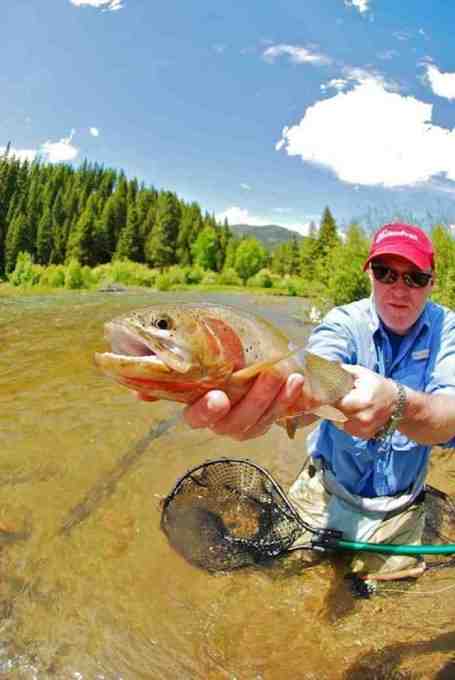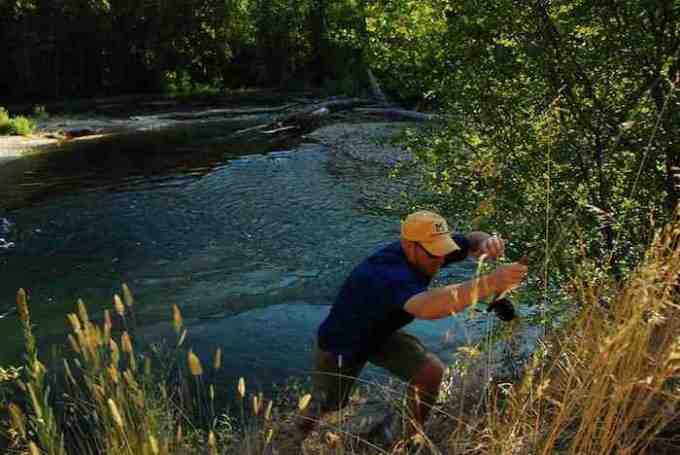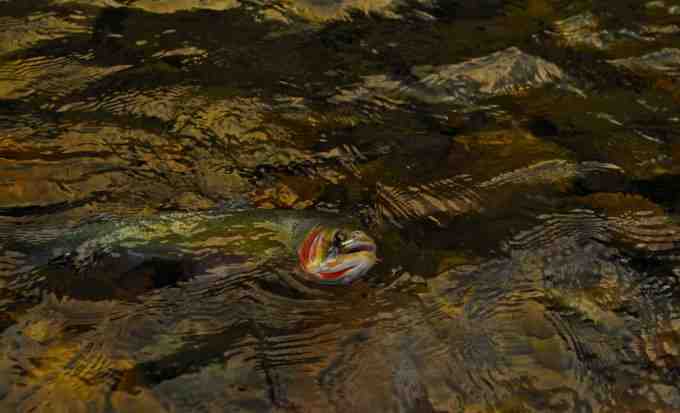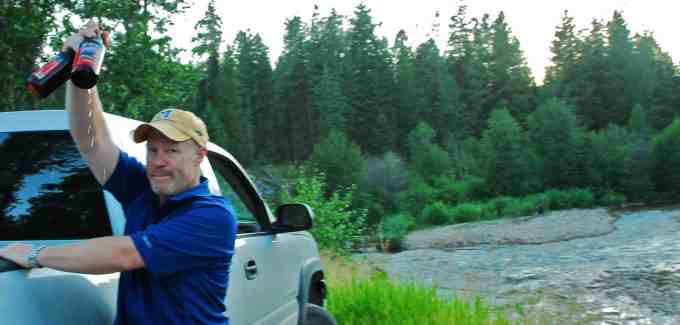 Dry flies, eager rainbows and cutts
Dry flies, eager rainbows and cutts
If you’re an angler living in the West and have entrepreneurial spirit, this is the best time of the year. Here’s why: after a major spring/early summer runoff, when freestone rivers were bent out of shape and trout were anything but easy to find, the waters have settled and are dropping, running completely clear but high enough to make trout feel good all day long. If you are willing to hike a little—as little as a hundred yards in some cases, but especially a half-mile or more—you’ll find eager trout and plenty of anglerless water.
Typically these western freestones are in perfect shape right after the Fourth of July. Waters like Idaho’s St. Joe, Kelly Creek, Lochsa, Big Wood and Big Lost rivers; Montana’s South Fork Flathead, Indian Creek, Boulder and Rock Creek, among many, many others; and Wyoming’s Paint Rock Creek, Popo Agie, Grey’s River and Shell Creek, often provide excellent fishing and great hatches to match during that big holiday weekend.
It happened a little later this year, but those streams are no less productive right now and on most of these waters you’ll encounter eager cutthroats and some rainbows that rise eagerly for standard attractors. Pack a box of ants, beetles, Royal Wulffs, Stimulators, Parachute Adams’ in various sizes all the way from size 14 to 20, and you should be good. A few hoppers, especially Schroeder’s Parachute Hopper would be wise to carry, too.
Got kids? This time of year is tops for introducing our “young n’s” to the sport and a day spent hiking along a river’s bank and through the woods, checking out the wildlife and flowers and trees—and everything else that’s good in the wild world—is a sure bet for producing smiles and keeping them away from the X-box. The only way you can spoil this outing is if you don’t bring enough food. Pack some Power Bars, gum, lots of H2o, pistachios and beef jerky, and a sandwich, and you’re good to go.
During August on many of the West’s best small streams you’ll find cicadas, spruce moths, wasps, a vary of mayfly and caddis, and grasshoppers along the banks and in the water. Those attractor dries match many of those insects and draw takes up top. If you have to go under the surface try cased caddis pupae, standard Pheasant Tail Nymphs in sizes 16 and 18, Copper Johns, Hare’s Ears, and Serendipities. Also harbor a few streamers, such as peacock buggers, so that you can dredge the larger fish out of these small streams. Midday is a good time to try those larger offerings.
Ok, as you probably know, morning and evenings produce best during the hottest days of summer, so lay off that last highball and, instead, pour an extra cup of coffee in the morning. Or drink that nightcap and perform the same ritual in the a.m., just brewing that coffee a little stronger.
Right now the temperatures in the West have been below average and you should find trout scattered throughout these rivers. If the weather turns hot, look for trout to move into the higher reaches of these rivers and their tributary streams before spreading out again in late August or early September.
The deepest pools and runs typically hold the largest fish so concentrate on those areas if you’re headhunting. Remember, though, on all of these waters a 15-inch trout is a trophy. With that said, surprises, in the form of 18 to 20-inch fish do arrive. The average trout on these streams runs 12 inches.
Truth is, in my mind, most of us get caught up in the big-name river game and end up fishing the same water that everyone else has pounded. Just over the hill or around the bend are hundreds of overlooked streams to choose from where nice trout rise eagerly for dry flies and you don’t find too many people on the water. If you have strong legs and the desire to catch trout without hookscars, these lesser-known waters are waiting and August is the time to visit them.




